Daiwa Lupin Spoons
Update
Daiwa has discontinued the Lupin spoons. The basic concepts of the article below are still valid, however. Please consider the Daiwa Eve spoons in 1.2g, the Forest Factor spoons in 1.2g and 1.8g, the Forest Pal spoons in 1.6g or the Shimano Slim Swimmer spoons in 1.5g. All are available on the JDM Spoons Shop page.
The Daiwa Lupin spoons are very nearly as small as the Vega spoons. They are just a bit wider, a bit more rounded, and stamped from thicker metal. Whereas the Vega spoons range from .4 grams to .8 grams, the Lupin spoons range from 1.2 grams to 1.8 grams. The difference between .8g and 1.2g may not sound like much, but it is just enough that the Lupin spoons are much easier to cast. They cast well enough that if you're fishing a relatively small stream you will have to be very careful to avoid putting them in the bushes on the far bank.
 A amall lure won't scare the fish
A amall lure won't scare the fishIn a situation like the one shown above, you know there's a fish in there. It's a small enough pool that you need a relatively small lure that won't scare the fish when it hits the water. You'll only have one shot at it, though, and to get the accuracy you'll need, you'll want something a bit heavier than the .8g Vega spoon. The slightly greater weight of the Lupin spoons will definitely increase your accuracy.
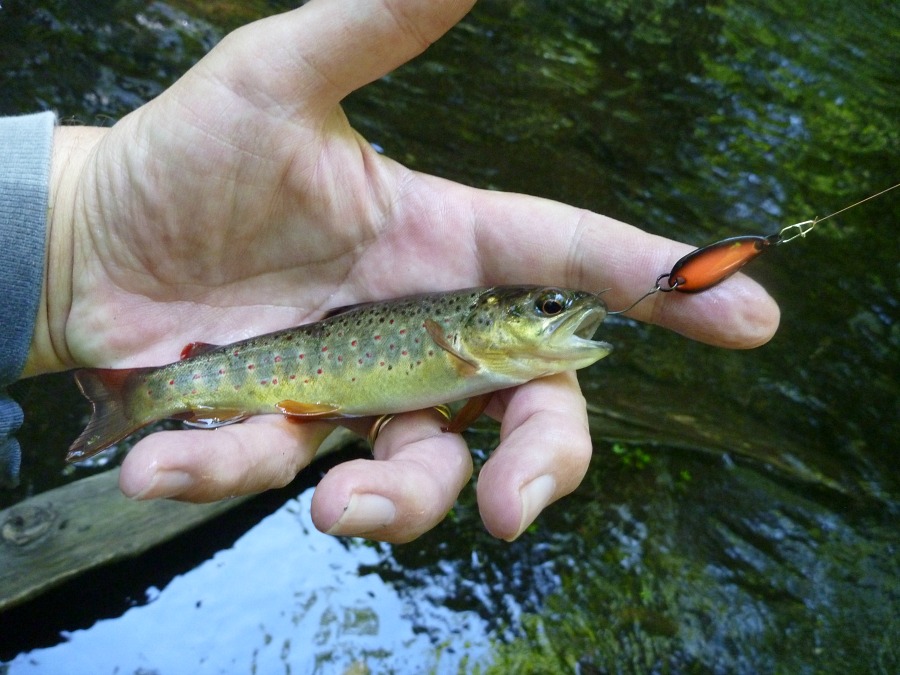 Daiwa Lupin "Orange Black"
Daiwa Lupin "Orange Black"Because they are much denser than the Vega spoons (much more weight and not much more surface area) they will also swim deeper in the water column.
If you are fishing a larger stream with deeper holes, you can get them deeper by waiting to start the retrieve and retrieving slowly. If you retrieve a spoon extremely slowly, what you think of as the top of the spoon (i.e., the orange and black side of the Orange Black spoon) will actually be facing the bottom of the stream.
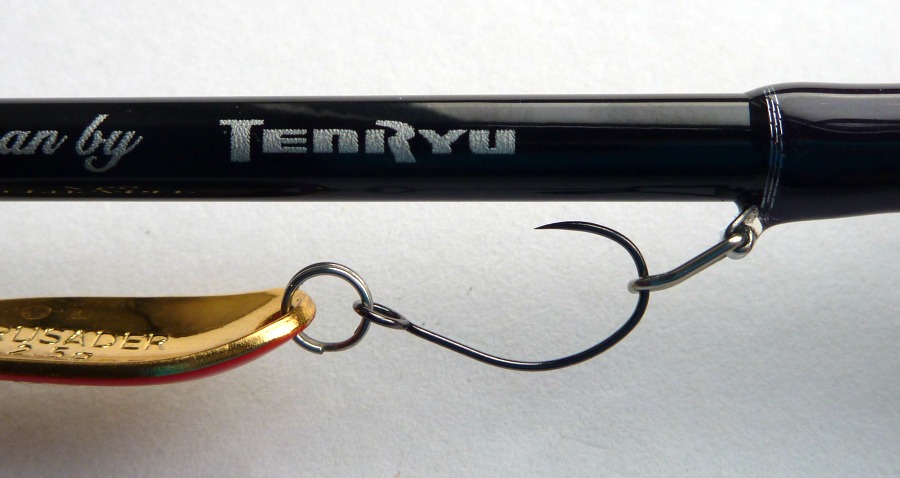 The hook point is always towards the convex side of the spoon.
The hook point is always towards the convex side of the spoon.On all the JDM single hook spoons I've seen, the hook is attached so that the point is up when the spoon is retrieved slowly enough that the convex side of the spoon remains facing the stream bottom. In the above photo, the Daiwa Crusader's factory barbed hook was replaced with a C'ultiva SBL-35 #8 barbless hook, but the point-up orientation was preserved. This orientation will reduce the chance of snags on either rocks or logs when the spoon is retrieved slowly.
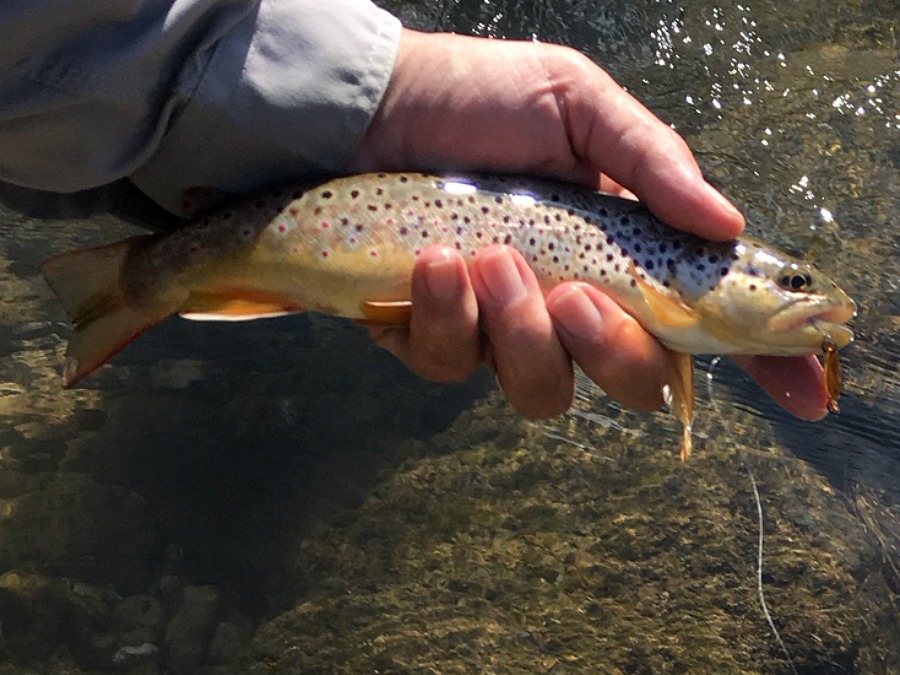 Daiwa Lupin "Royal Gold"
Daiwa Lupin "Royal Gold"Still, you can fish them in relatively small, relatively shallow streams and can keep them up and out of the rocks by keeping your rod tip up during the retrieve.
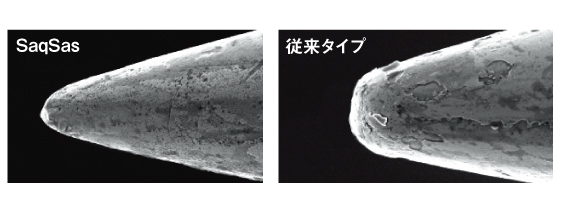 Hook point with SaqSas technology (left) compared to normal hook (right).
Hook point with SaqSas technology (left) compared to normal hook (right).The Daiwa Lupin spoons come with single barbless hooks (the Daiwa Presso SaqSas #8 Speed hook). The SaqSas hooks are fine wire hooks and are just incredibly sharp. Daiwa cautions that "you should be more careful when handling." I can attest that you do have to handle the spoons carefully or that sticky hook will indeed stick you!
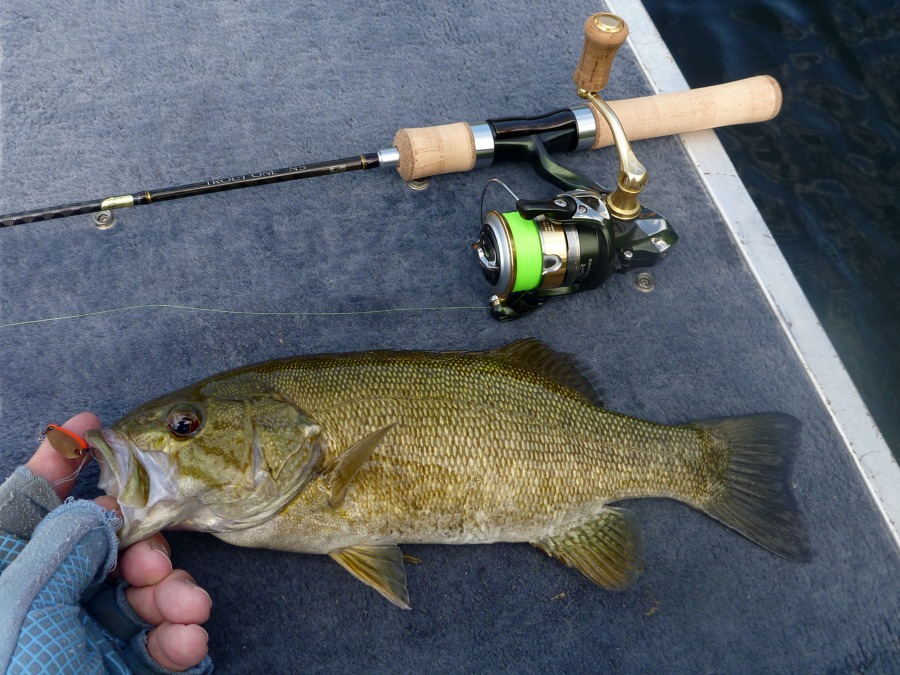 Daiwa Lupin "Horizon"
Daiwa Lupin "Horizon"Even though the Daiwa Lupin spoons were designed for trout, they will catch any fish that feeds on minnows.
Header photo: Tenryu Rayz RZ4102B-UL, Shimano Calcutta Conquest BFS-HG ('17)
Warning:
The hooks are sharp.
The coffee's hot.
The fish are slippery when wet.
Seriously, all the hooks sold on Finesse-Fishing.com, whether packaged as loose hooks or attached to lures, are dangerously sharp. Some have barbs, which make removal from skin, eyes or clothing difficult. Wear eye protection. Wear a broad-brimmed hat. If you fish with or around children, bend down all hook barbs and make sure the children wear eye protection and broad-brimmed hats. Be aware of your back cast so no one gets hooked.
Also, all the rods sold on Finesse-Fishing.com will conduct electricity. Do not, under any circumstances, fish during a thunder storm. Consider any fishing rod to be a lightning rod! Fishing rods can and do get hit by lightning!
Whatever you do, do it with finesse!